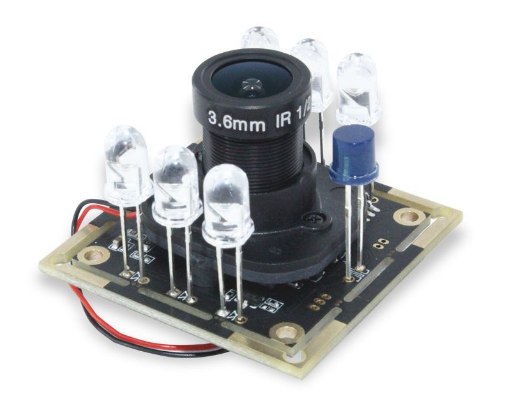Comparison of DSLR vs. Mirrorless Camera Modules
In this comprehensive and detailed article, we present a thorough comparison of DSLR (Digital Single-Lens Reflex) and Mirrorless Camera Modules. As experts in the field of photography and technology, we aim to provide you with valuable insights to help you make an informed decision when choosing between these two popular camera systems.
The evolution of camera technology has led to the rise of DSLR and Mirrorless Camera Modules as the primary choices for both amateur and professional photographers. These cutting-edge devices have revolutionized the way we capture moments and create art. In this article, we will delve into the key differences and benefits of both DSLR and Mirrorless camera systems, empowering you to select the ideal solution that suits your photography needs.
Understanding DSLR Cameras
What is a DSLR Camera?
A DSLR camera utilizes a mirror and pentaprism mechanism to redirect light from the camera's lens to an optical viewfinder. The mirror reflects the light, allowing photographers to see the scene directly through the viewfinder. When the shutter button is pressed, the mirror flips up, and the light passes through to the camera's sensor, capturing the image.
Advantages of DSLR Cameras
1. Optical Viewfinder: The optical viewfinder in DSLR cameras provides a clear and real-time view of the scene, allowing for better composition and precise framing.
2. Battery Life: DSLR cameras typically have larger batteries, resulting in longer-lasting power, ideal for extended photo sessions.
3. Autofocus Performance: DSLRs have traditionally offered faster and more reliable autofocus performance, especially in challenging lighting conditions.
4. Wide Lens Selection: DSLR systems boast a vast array of lenses, offering photographers unparalleled creative flexibility and the ability to adapt to various shooting scenarios.
Understanding Mirrorless Camera Modules
What is a Mirrorless Camera?
Mirrorless cameras, on the other hand, lack the mirror and pentaprism mechanism found in DSLRs. Instead, they employ an electronic viewfinder or rely solely on the camera's rear LCD screen for composition and framing.
Advantages of Mirrorless Cameras
1. Compact and Lightweight: Mirrorless cameras are generally more compact and lightweight than DSLRs, making them a preferred choice for travel and street photography.
2. Silent Shooting: Without the mirror slap noise, mirrorless cameras offer silent shooting, which is beneficial for capturing candid moments without disturbing the subject.
3. Continuous Autofocus: Many mirrorless cameras feature advanced autofocus systems that excel at continuous tracking of moving subjects, making them ideal for sports and wildlife photography.
4. Electronic Viewfinder: Some mirrorless cameras boast high-resolution electronic viewfinders that offer real-time previews of exposure settings and creative filters, enabling photographers to fine-tune their shots.
Related links:
10 Questions You Should Know About Software Frequency Generators
Top Trends for Signal Frequency Counter Agency in 2024
Unlocking Success with Signal Frequency Counter Agency
Power Quality Analyzers vs Traditional Meters: Which Energizes Renewables?
How to Choose a Power Quality Analyzer for Renewable Energy?
How to Export Flex Durability Testers Effectively?
Unlocking the Principle of Ut: Secrets Revealed
Image Quality and Sensor Size
Both DSLR and Mirrorless Camera Modules come with various sensor sizes, which play a crucial role in determining image quality and performance.
DSLR Sensor Size
DSLRs are equipped with larger sensors, ranging from full-frame to APS-C and Micro Four Thirds. Larger sensors generally deliver superior low-light performance, dynamic range, and overall image quality.
Mirrorless Sensor Size
Mirrorless cameras also offer a range of sensor sizes, including full-frame, APS-C, and Micro Four Thirds. Over the years, advancements in technology have significantly improved the image quality of mirrorless sensors, closing the gap with DSLRs.
Autofocus System
DSLR Autofocus System
Traditional DSLRs use phase-detection autofocus, which relies on dedicated autofocus sensors within the camera body. This system has been refined over the years and is highly effective for tracking moving subjects.
Mirrorless Autofocus System
Mirrorless cameras employ both contrast-detection and phase-detection autofocus systems. Some high-end models feature on-sensor phase-detection, delivering fast and accurate autofocus performance.
Video Capabilities
DSLR Video Capabilities
DSLRs have historically been limited in their video capabilities, often lacking advanced features such as 4K recording and high frame rates. However, recent DSLR models have made significant strides in improving their video functionality.
Mirrorless Video Capabilities
Mirrorless cameras have been at the forefront of video innovation, offering impressive 4K video recording, high frame rates, and advanced video-focused features like focus peaking and zebra patterns.
Lens Selection and Adaptability
DSLR Lens Selection
The extensive range of lenses available for DSLR systems is one of their most significant advantages. From wide-angle to telephoto, and from prime to zoom lenses, photographers have a plethora of options to suit their shooting style.
Mirrorless Lens Selection
While mirrorless lens lineups have expanded considerably, they may not match the sheer volume of DSLR lenses available. However, with the use of lens adapters, photographers can access a vast library of DSLR lenses on their mirrorless cameras.
Conclusion
In conclusion, both DSLR and Mirrorless Camera Modules offer distinct advantages and cater to various photography preferences. DSLRs excel in optical viewfinders and a wide selection of lenses, while mirrorless cameras shine in their compact size, silent shooting, and advanced video capabilities.
Ultimately, the choice between DSLR and Mirrorless comes down to your individual needs, shooting style, and budget. As technology continues to evolve, both systems will likely continue to push the boundaries of photography.
Remember, there's no one-size-fits-all answer, and the perfect camera for you is the one that feels like an extension of your creative vision.
If you want to know more information about Camera Modules, please contact us. We will provide professional answers.
Related links:How Should We Redefine the Principle of Ut?
10 Things You Should Know about the Elmendorf Tear Test Method
The Advantages of Employing the Elmendorf Tear Test Method
Top Surface Roughness Measurement Tools Unveiled
Choosing the Right Surface Roughness Measurement Tool
How to Choose the Best Waveform Generator?
Mastering Syringe Plunger Force: Easy Calculation Guide





